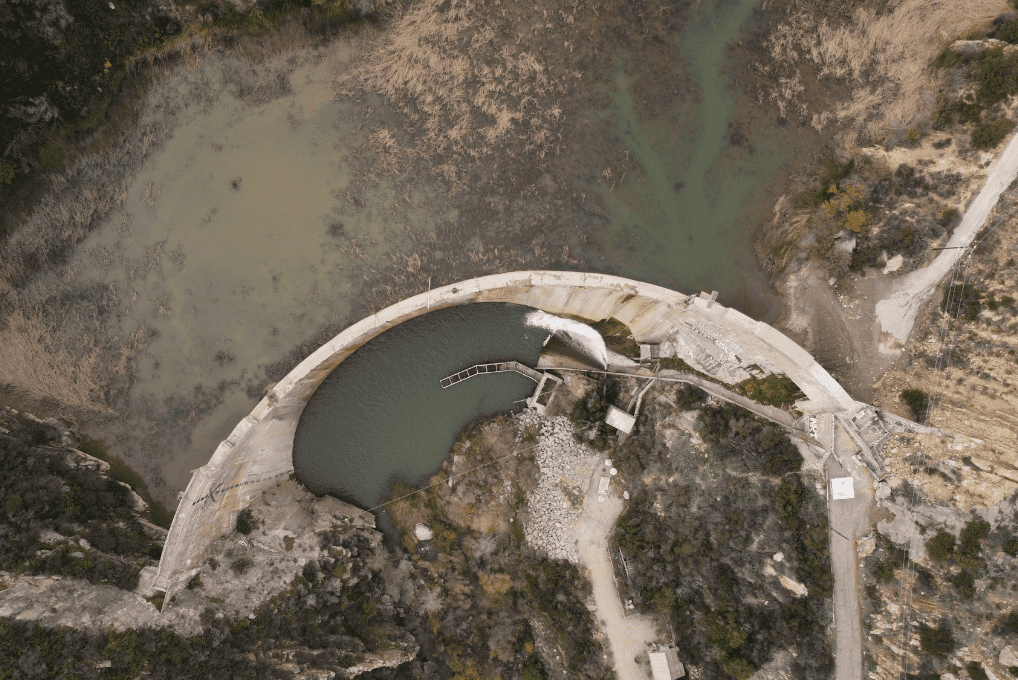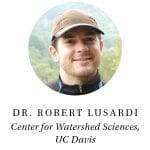THE DAM
Matilija Dam, located in the Ventura River watershed, is a concrete arch dam built in 1947. Infamous for the scissors painted on the dam by graffiti artists in 2011 that have become an iconic symbol for dam removal, it was originally designed for water storage and flood control. The scissors still remain.

Owner:
Ventura County Public Works Agency - Watershed Protection
Matilija Dam Location:
Matilija Creek, northwest of Ojai, CA
Completion Date:
1947
Size:
Height: 168 ft, Length: 620 ft, Total designed capacity: 7,018 acre ft., Current capacity: less than 500 acre ft.
Stakeholders:
Ventura County Watershed Protection District, California Department of Fish and Wildlife, Matilija Coalition, Patagonia, CalTrout, , Surfrider Foundation, Ojai Valley Land Trust, State Coastal Conservancy,National Marine Fisheries Service, Wildlife Conservation Board, Pew Charitable Trust, Resource Legacy Fund, Casitas Municipal Water District, Ventura Water, Meiners Oaks Water District, and Local Communities
Land Acknowledgment
Matilija Dam is located on the ancestral lands of the Chumash Tribe including the Barbareño Band of the Chumash Tribe and the Barbareño/ Ventureño Band of Mission Indians.The Problem
The Matilija Dam reservoir is essentially useless due to sediment buildup, rendering it incapable of fulfilling any of its original purposes for water supply and flood control. With no fish ladder or bypass structure present, it is a complete barrier to the migration of endangered Southern California steelhead. The dam also causes degraded water quality, an altered flow system, and disruption in the flow of sediment to the lower watershed, estuary, and beaches, which need sediment to replenish themselves. Matilija Dam has impounded approximately nine million cubic yards of sediment, and the physical condition of the 70+ year old dam continues to deteriorate. Historically inhabiting the Ventura River watershed, Southern steelhead are an incredibly important species because they evolved in seasonally disconnected river systems and are an adaptable species, able to survive in warmer waters than other steelhead populations. With only an estimated 500 adults remaining, this unique life history trait makes them a particularly valuable population to protect in the face of climate change and shifting weather patterns. Removal of Matilija Dam will reconnect access for steelhead to 17 miles of spawning, rearing, and foraging habitat above the dam. Reconnecting this habitat will help bolster species-wide recovery for Southern steelhead across Southern California.
Current Situation
Spanning 20 years of effort, a broad coalition of community groups and resource agencies have advocated for Matilija Dam removal, working together to develop a comprehensive strategy to restore the Ventura River. The Matilija Dam Ecosystem Restoration Project (MDERP) includes complete removal of Matilija Dam, construction of two new bridges to replace undersized river crossings, updates to Robles Diversion Facility, and modifications to three downstream levees. The MDERP is a major public works undertaking with many positive benefits for the environment and local communities. For example, in 2022, Ventura County completed the first of the two bridges replacement projects. With funding from California Department of Fish and Wildlife (CDFW), the Santa Ana Boulevard Bridge was expanded and widened. During recent floods, the new bridge improved the ability of the Ventura River to transport sediment and pass flood waters. The new bridge provided for great fish migration opportunities for Southern steelhead at former passage bottle neck location and provides safe lanes for pedestrian, bike, and equestrian use. Removing Matilija Dam as part of the full MDERP project will not be cheap. This Santa Ana Boulevard Bridge Project alone costs roughly $13 million dollars. Due to the lack of dedicated funding, County staff and partners must continually seek out competitive grant programs to fund the project. This creates uncertainty and issues for ensuring all the necessary planning, permitting, and engineering work is completed in a timely manner. As of February 2024, Ventura County is preparing the higher-level plan sets for detailing the removal of Rindge Dam along with an Environmental Impact Report (EIR) for the project. The County plans to release the EIR in 2024, along with request for public comment. They anticipate completion of the final dam removal plan in 2026. Planning, engineering, design, and natural resource studies continue for the Camino Cielo Bridge Project, the Robles Diversion Facility Modification, and for the three downstream levees. We anticipate construction on the Camino Cielo Bridge to be completed in 2025, modification of the Robles Diversion to finish in 2027, and all required levee improvements to be wrapped up by 2028. This schedule will allow for Ventura County to construct the sediment by-pass orifices and gates in the dam face at the same time with dam removal to begin as soon as 2030 following the initial sediment release.
Potential for Removal
Removing Matilija Dam will restore a free-flowing river from the headwaters to the ocean, re-establish access for Southern steelhead to required habitat, revitalize a healthy, native ecosystem, and expand opportunities for outdoor recreation. In 1998, Ventura County officially made the decision to remove the dam. In March 2016, the group overseeing design alternatives voted in favor of a removal plan. The approved alternative will use two bore holes at the base of the dam to remove and transport the impounded sediment. This concept represents a “natural transport” alternative that concentrates the downstream transport of the impounded sediment during the first storm event once the bore holes are in place and the lower watershed is ready. This alternative will minimize ecological impact downstream and lower the overall project cost by reducing the need to truck material in and out of the reservoir. It is important to note that all of the sediment behind Matilija was destined for downstream and the lower watershed has been starved of this sediment since the construction of Matilija Dam. Current projections estimate that once the bore holes are opened, complete dam removal and a free-flowing river will be achieved in two to five years.
Voice of Matilija Dam






